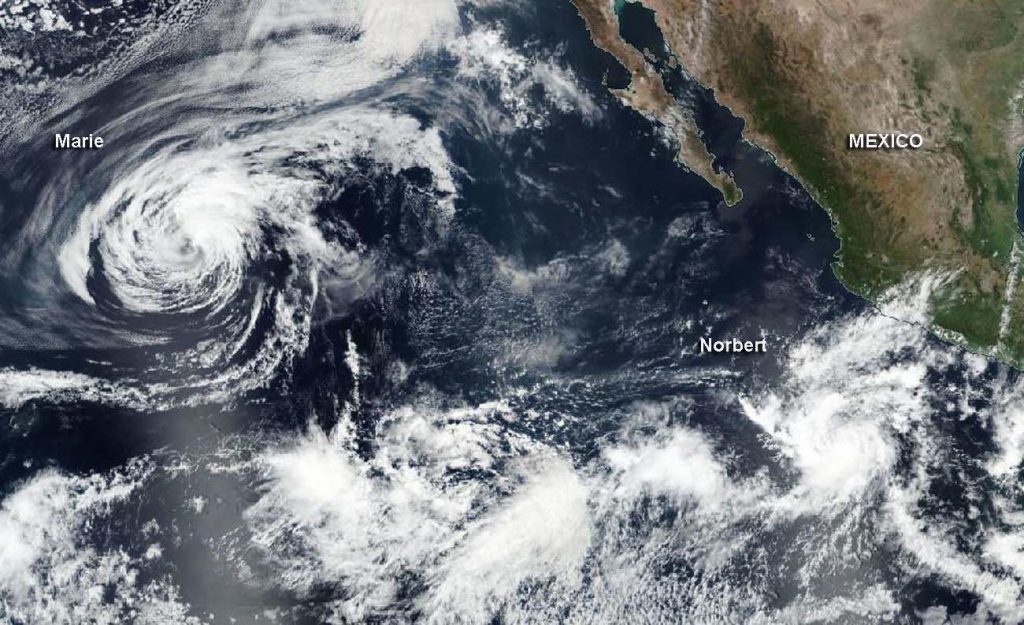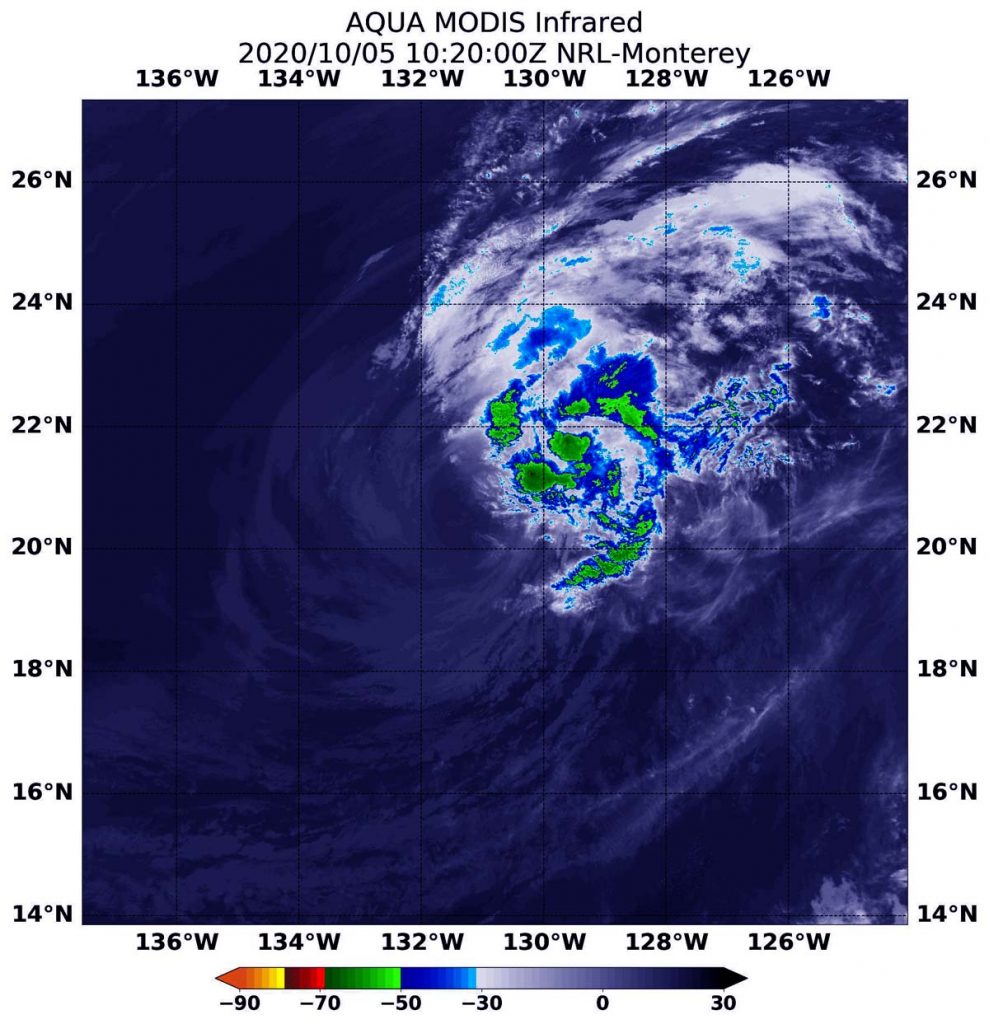Oct. 06, 2020 – NASA Catches Development of Tropical Storm Norbert as Marie Declines
NASA-NOAA’s Suomi NPP satellite passed over the Eastern Pacific Ocean and captured the birth of a depression that became Tropical Storm Norbert while Marie continued weakening while headed toward the Central Pacific.

The same VIIRS visible image (above) besides capturing Norbert also caught a weakening Tropical Storm Marie as it continued toward the Central Pacific Ocean. The Suomi NPP image showed that deep convection and building thunderstorms associated with Marie had all but dissipated and what was left of it was located over 120 nautical miles away from the exposed low-level center of the cyclone (as a result of wind shear).
By 5 a.m. EDT on Oct. 6, Tropical Depression 19E strengthened into a tropical storm and was re-dubbed Norbert. At 11 a.m. EDT, Marie was barely hanging onto tropical storm status and fading quickly.
At 11 a.m. EDT (1500 UTC), the center of Tropical Storm Marie was located near latitude 22.1 degrees north and longitude 135.1 degrees west. Marie is moving toward the west-northwest near 9 mph (15 kph), and this general motion with some decrease in forward speed is expected during the next day or so, followed by a turn toward the west late Wednesday or early Thursday.
Maximum sustained winds have decreased to near 45 mph (75 kph) with higher gusts. Gradual weakening is forecast during the next 48 hours, and Marie is forecast to become a remnant low-pressure area by tonight and a trough of low pressure in a few days.
By Rob Gutro
NASA’s Goddard Space Flight Center
Oct. 05, 2020 – NASA Infrared Imagery Reveals Wind Shear Displacing Marie’s Strongest Storms
NASA’s Aqua satellite provided an infrared view of Tropical Storm Marie that revealed the effects of outside winds battering the storm.

Wind shear occurs when winds at different levels of the atmosphere push against the rotating cylinder of winds, weakening the rotation by pushing it apart at different levels.
NASA’s Aqua Satellite Reveals Effects of Wind Shear
Infrared light is a tool used to analyze the strength of storms in tropical cyclones by providing temperature information about a system’s clouds. The strongest thunderstorms that reach highest into the atmosphere have the coldest cloud top temperatures. This temperature information can also tell forecasters if the strongest storms in a tropical cyclone are being pushed away from the center, indicating wind shear.
On Oct.5 at 6:20 a.m. EDT (1020 UTC), the Moderate Resolution Imaging Spectroradiometer or MODIS instrument that flies aboard NASA’s Aqua satellite gathered infrared data on Marie that confirmed wind shear was adversely affecting the storm. Westerly vertical wind shear has pushed strongest storms east of the center where cloud top temperatures are as cold as minus 50 degrees Fahrenheit (minus 45.5 Celsius). The remains of the deep convection associated with Marie continues to get further displaced from the exposed low-level center due strong upper-level westerly winds, with the gap now over 100 nautical miles between those two features.
Status of Tropical Storm Marie
At 11 a.m. EDT (1500 UTC), the center of Tropical Storm Marie was located near latitude 21.1 degrees north and longitude 131.9 degrees west. Marie is moving toward the west-northwest near 9 mph (15 km/h), and this general motion, with a decrease in forward speed, is anticipated during the next couple of days followed by a turn to the west. Maximum sustained winds are near 60 mph (95 kph) with higher gusts.
Forecast for Marie
Continued weakening is expected and Marie is forecast to degenerate into a remnant low by Tuesday night.
NASA Researches Tropical Cyclones
Hurricanes/tropical cyclones are the most powerful weather events on Earth. NASA’s expertise in space and scientific exploration contributes to essential services provided to the American people by other federal agencies, such as hurricane weather forecasting.
For more than five decades, NASA has used the vantage point of space to understand and explore our home planet, improve lives and safeguard our future. NASA brings together technology, science, and unique global Earth observations to provide societal benefits and strengthen our nation. Advancing knowledge of our home planet contributes directly to America’s leadership in space and scientific exploration.
For updated forecasts. visit: www.nhc.noaa.gov
